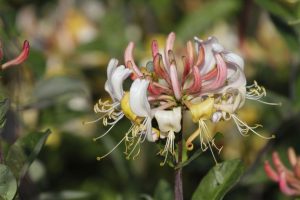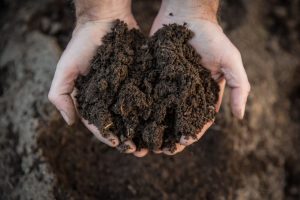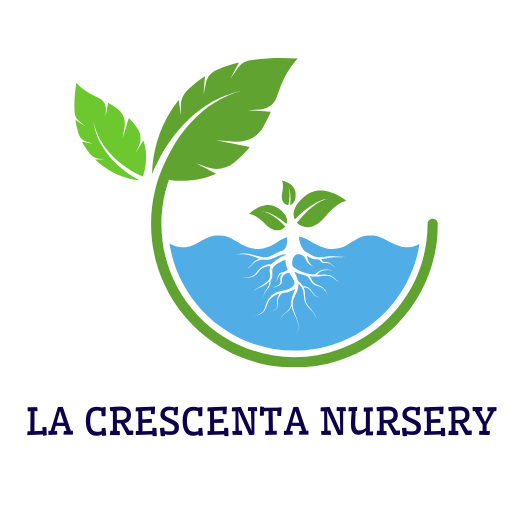If you’re looking to add a fragrant, visually stunning element to your garden, learning how to grow honeysuckle is a must. Honeysuckle vines are not only beautiful, but they also attract hummingbirds and butterflies, making them a delightful addition to any landscape. Whether you’re a gardening newbie or a seasoned pro, this comprehensive guide will walk you through everything you need to know to grow and care for honeysuckle successfully.
How to Grow Honeysuckle
Honeysuckle is a versatile and hardy plant, perfect for adding vertical interest to your garden. Here’s a detailed breakdown on how to grow honeysuckle from planting to blooming.
Choosing the Right Variety of Honeysuckle
When learning how to grow honeysuckle, the first decision you’ll need to make is choosing the right variety. Honeysuckle comes in several types, including:
- Climbing Honeysuckle (Lonicera periclymenum): Ideal for growing on trellises, walls, or fences.
- Bush Honeysuckle (Diervilla): A shrub-like version that works well for borders or as a standalone plant.
- Japanese Honeysuckle (Lonicera japonica): An invasive variety in some areas but is known for its sweet fragrance and rapid growth.
Each type of honeysuckle has its own set of characteristics, so consider what will work best in your garden.

Preparing the Soil
The next step in how to grow honeysuckle is preparing the soil, which is crucial for the plant’s success.
- Soil Type: Honeysuckle prefers well-draining soil that is rich in organic matter. A loamy soil with a slightly acidic to neutral pH (6.1-7.5) is ideal.
- Amending the Soil: If your garden soil is heavy clay, you may need to amend it with compost or sand to improve drainage.
- Testing the Soil: A simple soil test can help you determine if your soil needs any adjustments before planting.

Planting Honeysuckle
When it comes to how to grow honeysuckle, the actual planting process is straightforward but must be done correctly for the best results.
- Timing: The best time to plant honeysuckle is in the spring or fall when the weather is mild.
- Spacing: If you’re planting multiple vines, space them about 3 feet apart to allow for adequate air circulation.
- Depth: Dig a hole that is twice as wide as the root ball but not deeper. Place the plant in the hole so that the top of the root ball is level with the ground surface.
Supporting the Vines
Supporting your honeysuckle vines is an essential part of how to grow honeysuckle.
- Trellis or Arbor: Honeysuckle is a climbing plant, so it will need something to climb on, such as a trellis, arbor, or fence.
- Training the Vines: Gently tie the vines to the support structure using garden ties or soft twine. As the plant grows, continue to guide the vines to ensure they cover the structure evenly.
Watering and Feeding
Proper watering and feeding are key elements in how to grow honeysuckle successfully.
- Watering: Honeysuckle prefers consistent moisture, especially in the first year after planting. Water the plants deeply once a week during dry periods.
- Mulching: Applying a layer of mulch around the base of the plant helps retain moisture and keeps the roots cool.
- Feeding: Fertilize your honeysuckle in the spring with a balanced, slow-release fertilizer to encourage healthy growth and abundant blooms.
Pruning and Maintenance
Knowing how to prune is a critical part of understanding how to grow honeysuckle.
- When to Prune: Prune honeysuckle in late winter or early spring before new growth begins. For heavy flowering varieties, prune after flowering to maintain shape and encourage new blooms.
- How to Prune: Remove any dead or damaged stems first. Then, trim back overgrown areas to keep the plant in check. Thin out crowded areas to improve air circulation.
- Regular Maintenance: Keep an eye out for any signs of disease or pests. Regular maintenance will ensure that your honeysuckle remains healthy and vigorous.
Ideal Growing Conditions for Honeysuckle
Beyond the basics of how to grow honeysuckle, understanding the ideal growing conditions will help you cultivate a thriving plant.
Sunlight Requirements
Honeysuckle thrives in full sun but can tolerate partial shade. Aim for at least 6 hours of direct sunlight per day for the best blooms.
Climate Considerations
Honeysuckle is hardy in USDA zones 4-9. In colder climates, it may die back to the ground in winter but will regrow in spring.
Companion Planting
Consider planting honeysuckle with other shade-loving or woodland plants, such as ferns or hostas, to create a lush, layered garden bed.
Why Grow Honeysuckle?
Now that you know the basics of how to grow honeysuckle, let’s explore why you might want to include this lovely plant in your garden.
- Fragrance: The sweet, intoxicating scent of honeysuckle is a delight in any garden.
- Wildlife Attraction: Honeysuckle attracts pollinators like bees, butterflies, and hummingbirds, making it a great choice for wildlife-friendly gardens.
- Versatility: Whether you want a climbing vine or a bushy shrub, honeysuckle offers options that can fit a variety of garden designs.
Common Challenges and Solutions
While how to grow honeysuckle can be relatively straightforward, gardeners often encounter a few common challenges. Understanding these issues and knowing how to address them will ensure your honeysuckle thrives. Here’s a detailed look at some of the typical problems and practical solutions:
Pets
Aphids and Spider Mites
- Description: Aphids are tiny, soft-bodied insects that feed on the sap of plants, leading to stunted growth and distorted leaves. Spider mites, though even smaller, can cause similar damage, including fine webbing on the leaves.
- Signs: Look for yellowing or curling leaves, sticky residue on the plant, or visible insects on the undersides of leaves.
- Solutions:
- Insecticidal Soap: Apply insecticidal soap, which is effective against soft-bodied insects like aphids. It works by suffocating the pests and is safe for plants.
- Neem Oil: Neem oil acts as both an insecticide and fungicide. It disrupts the life cycle of pests and helps manage infestations. Mix according to the package instructions and spray on the affected areas, making sure to cover both the tops and bottoms of leaves.
- Manual Removal: For light infestations, you can manually remove pests by spraying the plant with a strong jet of water or gently wiping the leaves with a damp cloth.
Diseases
Powdery Mildew and Leaf Spot
- Description:
- Powdery Mildew: This fungal disease appears as white or grayish powder on the leaves, stems, and buds. It thrives in warm, dry conditions and can reduce the plant’s ability to photosynthesize.
- Leaf Spot: Leaf spot causes irregular brown or black spots on the leaves, often with a yellow halo. It can lead to premature leaf drop.
- Signs: Powdery mildew manifests as a white, powdery coating, while leaf spot presents as discolored, necrotic patches on the leaves.
- Solutions:
- Improve Air Circulation: Space plants adequately to ensure good airflow. Prune crowded areas to enhance ventilation and reduce humidity, which helps prevent fungal growth.
- Watering Practices: Water at the base of the plant rather than overhead to keep foliage dry. Avoid watering in the late afternoon or evening to allow leaves to dry before nightfall.
- Fungicides: For severe cases, apply a fungicide designed for powdery mildew or leaf spot. Follow the manufacturer’s directions for proper application and timing.
Invasive Growth
Japanese Honeysuckle
- Description: Japanese honeysuckle (Lonicera japonica) is known for its vigorous growth and can become invasive in some regions, overpowering native plants and spreading rapidly.
- Signs: Watch for unchecked spread, where honeysuckle encroaches on other plants or garden areas.
- Solutions:
- Regular Pruning: To keep Japanese honeysuckle in check, prune it back regularly. Remove excess growth and any tendrils that spread beyond the desired area. This helps control its spread and maintains a manageable size.
- Physical Removal: If the plant becomes too invasive, you may need to cut it back hard or even dig up and remove sections of the plant. Ensure you remove as much of the root system as possible to prevent regrowth.
- Alternative Varieties: Consider planting non-invasive honeysuckle varieties if you live in an area where Japanese honeysuckle is known to be a problem. Look for alternatives that are less aggressive and better suited to your local ecosystem.
Creative Uses for Honeysuckle
Knowing how to grow honeysuckle opens up a world of creative possibilities in your garden.
Natural Privacy Screen
Plant honeysuckle along a fence or trellis to create a natural, fragrant privacy screen.
Living Archway
Train honeysuckle to grow over an archway or pergola to create a stunning garden entrance.
Ground Cover
Certain varieties of honeysuckle can be used as ground cover, perfect for areas where you want to suppress weeds and add color.
Conclusion
Growing honeysuckle is a rewarding experience that brings beauty and fragrance to your garden. By following the steps outlined in this guide on how to grow honeysuckle, you’ll be well on your way to cultivating a healthy, thriving plant that will delight you for years to come. Remember, the key to success lies in choosing the right variety, providing the ideal growing conditions, and maintaining your plant with regular care.
FAQs
How long does it take for honeysuckle to bloom?
Honeysuckle typically blooms in its first or second year, depending on the variety and growing conditions.
Can honeysuckle be grown in pots?
Yes, honeysuckle can be grown in pots, but make sure the container is large enough to accommodate the plant’s root system.
How often should I water honeysuckle?
Water honeysuckle deeply once a week, more often in hot, dry weather.
Is honeysuckle poisonous to pets?
Some types of honeysuckle are toxic to pets if ingested, so it’s best to keep them out of reach.
When is the best time to prune honeysuckle?
The best time to prune honeysuckle is in late winter or early spring before new growth starts.

Related articles
Top 5 Spring Tree Pests: Identifying and Managing Common Threats
How to Grow Virginia Creeper: A Complete Guide
How to care for cyclamen from the expert
Detailed instructions: How to care for propagated plants
Understanding tree diseases: Identification, prevention, and treatment
Detailed instructions: How to care for fruit trees
Detailed instructions how to grow winter vegetables
How to propagate an aloe plant: a detailed guide to the methods